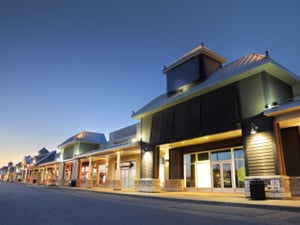
United States Department of Agriculture (USDA) Loans
The USDA helps create jobs and stimulates rural economies by providing financial backing for rural businesses and properties. Its primary purpose is to create and maintain employment and improve the economic climate in rural communities. USDA Loan proceeds may be used for working capital, machinery and equipment, real estate, and certain types of debt refinancing. This is achieved by expanding the lending capability of private lenders in rural areas and helping them service quality loans that provide lasting community benefits. This program represents a true private-public partnership.
| Loan Type | *Property Type | Min Loan Amount | Max LTV | Term Length | Amortization | Rates |
| USDA | A, H/M, I/W, M/H, MU, O, R, SS | $1,000,000 | 85% | 5-15 Years | 15-30 Years | |
| *A = Apartment H/M = Hotel/Motel I/W = Industrial/Warehouse M/H = Medical/Healthcare MU = Mixed Use O = Office R = Retail SS= Self-Storage | ||||||
| Underwriting Parameters | Loan Features | Loan Servicing | ||||||
| Retail Center Financing | Self Storage Mortgages
USDA Programs
Business Loans and Grants
The Business Program (BP) works in partnership with the private sector and community-based organizations to provide financial assistance and business planning. It primary purpose is to fund projects that create or preserve quality jobs and/or promote a clean environment with a rural area (under 50,000 population). This program is often leveraged with public and private lenders to meet business and credit needs in under-served areas. Recipients of these programs may include individuals, corporate entities, public agencies, not-for-profit organizations (NPOs), Indian tribes, and private companies.
Business and Industry Guaranteed Loan (B&I) Program: The purpose is to improve, develop, or finance business, industry, and employment and improve the economic and environmental climate in rural communities.
Rural Business Investment Program: The purpose is to improve, develop, or finance business, industry, and employment and improve the economic and environmental climate in rural communities.
Multifamily
The Multifamily Housing Program offers various products for traditional, low income, senior housing, and construction in rural areas.
Rural Rental Housing: This program is made to individuals, trusts, associations, partnerships, limited partnerships, State or local public agencies, consumer cooperatives, and NPOs.
Guaranteed Rental Housing: This program guarantees the construction, acquisition, or rehabilitation of rural multi-family housing.
Housing Preservation Grants (HPG): This program provides grants to sponsoring organizations for the repair or rehabilitation of very low- to low-income housing.
Rental Assistance Program: This program provides an additional source of support for households with incomes too low to pay the HCFP subsidized (basic) rent from their own resources.
Multi-Family Housing Preservation and Revitalization (MPR): The goal of the MPR program is to restructure Rural Rental Housing loans and Off-Farm Labor Housing loans, revitalizing projects in order to extend the affordable use of these projects without displacing tenants due to increased rents.
Loan Features
Term Length and Amortization: USDA term length and amortization depends on the product as well as the underwriting guidelines of the conventional partner. Terms and amortizations can go up to 40 years in some limited circumstances, but are typically between 5 and 30 years.
Recourse: USDA Loans are almost always recourse, which means that a personal guaranty for the repayment of the loan is required. Full recourse loans make the sponsors guarantying the loan responsible for any and all shortfalls between the loan balance and sales price in the event of default and foreclosure as well as any applicable legal and ancillary fees.
Prepayment Penalty: Prepayment structures can vary greatly, depending on the how the conventional partner structures the loan and what USDA program is guarantying the loan.
Lending Areas: USDA guaranties are only available in rural areas (Less than 50,000 population).
Loan Servicing
USDA Loans are typically serviced by the conventional partner or a third party. The Master Servicer is responsible for day-to-day loan servicing practices including collecting loan payments, managing escrow accounts, analyzing financial statements inspecting collateral and reviewing borrower consent requests. All non-performing mortgages are usually sent to the special servicer. The special servicer is responsible for preforming customary work-out related duties including extending maturity dates, restructuring loans, appointing receivers, foreclosing the lender’s interest in a secured property, managing the foreclosed real estate and selling the real estate. Under some situations, master servicers subcontract some of their responsibilities to a primary or sub servicer in order to uphold the servicing standard when they need additional assistance.


